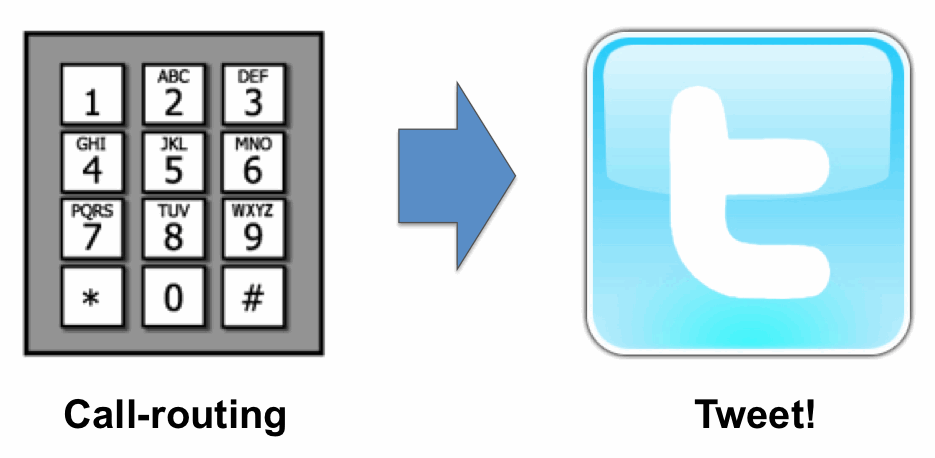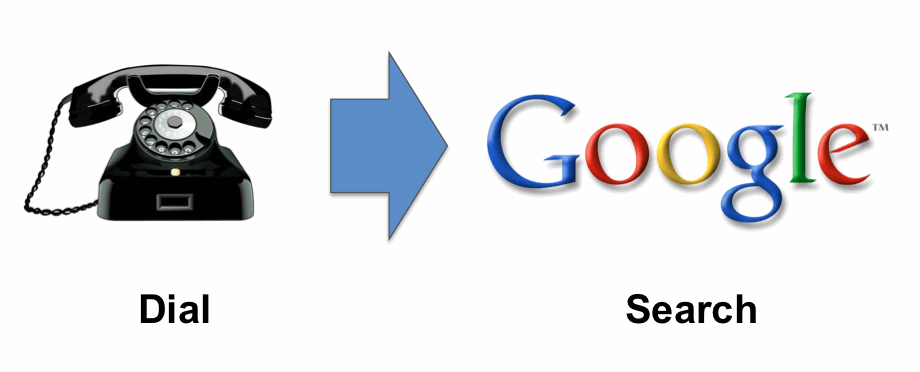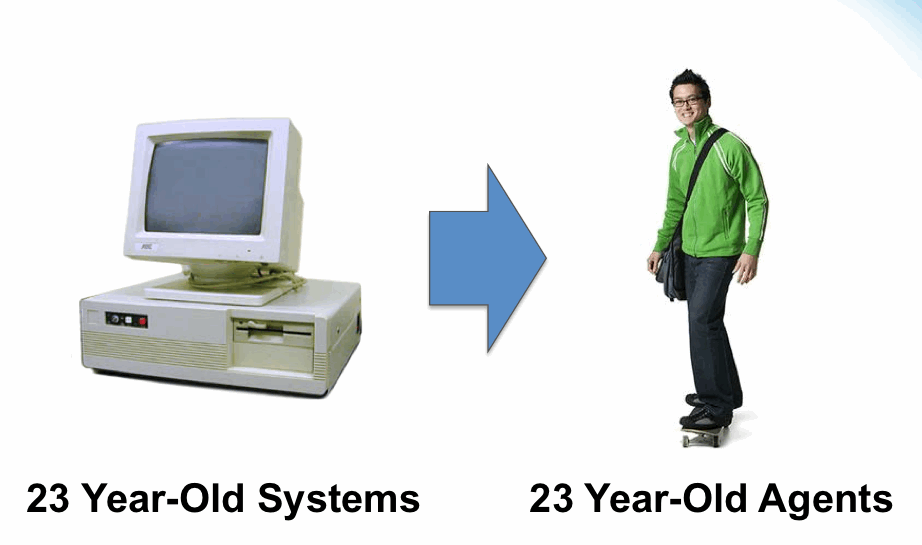From Deflecting Customers to Embracing Them
[Editors' Note: This Viewpoint was written by Alex Dayon, an executive at Salesforce.com. We've timed the debut of this piece to coincide not only with the July issue of CRM, containing a look back at the previous 15 years of the industry, but also the 2010 CRM Evolution conference opening today in New York and the announcement of the 2010 CRM Market Awards — in which Salesforce.com makes a very strong showing, taking the winner's spot in four of 10 Market Leader categories; an Influential Leader nod for Marc Benioff, the company's cofounder, chairman, and chief executive officer; and a CRM Elite Award for Salesforce.com user Beazer Homes USA.]
Fifteen years ago, when the Web was still in its infancy, the driving force for CRM was a device that had been around for more than a century: Alexander Graham Bell's world-changing telephone. Customer service was conducted almost entirely through this medium, and CRM innovation was driven by almighty contact center metrics such as "average handle time" and "first-call resolution." Time on the phone was the only currency you had with customers, and eliminating as much of that time as possible was a measure of your efficiency. For a while, it seemed like keeping the customer at arm's length was the goal.
Not anymore. Here are six ways that the new Internet -- a mobile, social, and real-time Internet -- is changing the playing field for CRM and putting customers back in control.
1. Now is the new "on hold"
Twitter added 105 million users in just four years; Facebook added more than 500 million users in the last six. What these hundreds of millions of people have in common are their expectations. Customers now expect instant responses from their friends on their location-aware mobile devices, along with immediate service. Customer service organizations are challenged to provide real-time responses to customers on any channel, anywhere, on any device. To do so, service agents need to be empowered with a full set of contextual CRM information, including a customer's current location, integrated sales-and-service history, social media interactions, analytics, and relevant product and service recommendations. One recent example of this occurred in South Africa for the 2010 World Cup, when South African Tourism provided real-time service to over 300,000 mobile, social fans on Twitter, and delivered an amazing customer experience to World Cup visitors.
2. From deflecting calls to embracing communities
For years, self-service and call deflection were the standard responses to reducing call volume. But the massive impact of social media and online communities enables customers to connect with each other to propose new ideas, share trusted recommendations, and get faster and better-informed answers. As a result, self-service Web sites are evolving from the pure call-deflection tools of 10 years ago to customer-centric destinations. Companies are now fostering rich communities to help customers resolve issues, share feedback, and propose creative ideas for product innovations.

Not surprisingly, these communities improve customer loyalty. For Starbucks, a vibrant community of loyal fans at mystarbucksidea.com was the source of the ubiquitous green stir stick seen in all of its coffee shops. On the Dell customer community Web site, ideastorm.com, customers can post questions and new product suggestions (such as the Linux laptop) to Dell customer service and support. These interactions with the Dell community can also post directly to the customer's Facebook wall, where their Facebook friends can see.
3. There's no "press 1" on Twitter
In traditional CRM, customer service is largely focused on phone-based interactions, with the keypad and phone-tree being used to connect customers with the relevant department. We're all familiar with "press 1 for sales and press 2 for service." Although it's a serviceable approach, it doesn't reflect how customers think about things or how they want to be treated.

Companies can't always rely on phone-trees to route their customers to departmental silos in today's world. This is because their customers are posting their questions, issues, and complaints -- in public on social networks.
This refocuses the customer service experience from department-centric to customer-centric. Instead of customers navigating a phone-tree, your agents are encouraged to use social, mobile, and real-time applications to collaborate across all departments to share knowledge and solve customer cases faster. The results? Customers get better service and management gets real-time customer visibility.
4. Google is the top channel
With Google now getting more than 34,000 searches per second and the 1-800 number fast becoming a last resort for many customers, it's critical that companies be able to provide customer service answers on Internet search engines. Even if you have a great company Web site, your customers are likely heading to Google for answers.

There's no reason your company should be cut out of the conversation. Companies can connect with customers on Google by unlocking the power of an internal knowledge base and sharing publicly on the Web the answers to commonly asked questions. The latest customer service solutions need to be readily accessible through every channel, Google included. By sharing knowledge-base articles publicly on corporate Web sites and then making those articles easily accessible to customers on Google, companies such as Seagate are reducing service costs and offering better service through channels frequented by their customers.
5. From 23-year-old systems to 23-year-old agents
The effort to hire, train, and retain great service agents is as important as ever. But in the CRM of old, training an agent to full productivity could take six months, and there was no guarantee she wouldn't leave three months later. While the contact centers most companies use haven't changed in years, or even decades, the skill set of a 23-year-old service agent has changed enormously. Today the typical 23-year-old service agent brings hundreds of hours of experience with Internet applications, community sites, and social media.

Modern customer service organizations are starting to roll out new applications that leverage the Web and the social skill sets these new agents possess. These private and secure applications employ familiar collaboration functionality -- user profiles, following, sharing, commenting -- to train agents and speed their learning curve. Agents can become productive in days instead of months. Learning from peers as they work provides them with greater job satisfaction and increases the likelihood they'll remain in their roles longer.
6. Live-in-5 contact centers
During the last 20 years, customer service executives had to accept the contact centers that were often rigid or inflexible. Deployments lasting 12 months or even 18 months were to be expected. And the very word "upgrade" struck fear into the hearts of CIOs and customer service executives everywhere. Even minor changes could take months.
Today's contact center solutions must be flexible to keep up. Merger-and-acquisition (M&A) strategies can convert small, single-product companies into global, multiproduct companies overnight, in which a complete portfolio of products must be supported. Agile contact centers can enable a quick response to emergencies, business drivers, or changes in service-agent staffing models. Agility means being able to respond to M&A growth and consolidate contact center operations in months, not years.
Social CRM has changed the game
With the massive impact of social media sites such as Facebook and Twitter, mobile-device adoption, and the accelerating pace of CRM innovation in the cloud, heightened expectations for CRM have emerged -- particularly within customer service. As social media makes customer service interactions more real-time and public, providing a great customer experience through every channel becomes critical to driving long-term customer loyalty and increasing customer lifetime value.
The fact is: the customer is back in control, and CRM needs to be ready to meet that challenge — today.
.
About the Author
Alex Dayon (adayon@salesforce.com) is executive vice president of CRM at Salesforce.com. He is responsible for driving the product vision of the Sales Cloud and Service Cloud as well as leading the sales and marketing execution.
.
Please note that the Viewpoints listed in CRM magazine and appearing on destinationCRM.com represent the perspective of the authors, and not necessarily those of the magazine or its editors.
You may leave a public comment regarding this article by clicking on "Comments" below.
If you would like to submit a Viewpoint for consideration on a topic related to customer relationship management, please email viewpoints@destinationCRM.com.
For the rest of the July 2010 issue of CRM magazine — which examines the past 15 years in the CRM industry — please click here.
Related Articles
CRM: Then and Now
14 Jul 2010
Over the last 15 years, CRM projects and plans may have changed dramatically, introducing new angles and complex combinations, but the overarching goal of improving the customer relationship has remained a straight shot.
Salesforce.com Expands the Cloud to Sales
10 Feb 2009
The Spring '09 release of the popular on-demand CRM platform includes new social functions for salespeople.
Salesforce.com Adds Service to the Cloud
15 Jan 2009
The software-as-a-service CRM vendor's new Service Cloud solidifies crowdsourced customer support.
Buyer's Guide Companies Mentioned